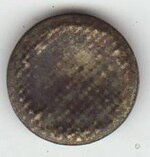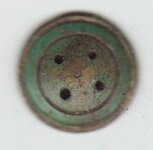johnnyi
Bronze Member
- Jul 4, 2009
- 1,887
- 144
- Detector(s) used
- minelab, white's xlt, deus xp, fisher aquanaut, white's twin box
- Primary Interest:
- Relic Hunting
This is a really weird one, and I wonder if anyone has found one like it? I found it at a depth of objects dating from colonial to probably the 1840's at the latest. It seems to be made of at least three seperate pieces. The front shell seems to be solid silver (no sign of corrosion anywhere to suggest plating) which is now concave, but was probably once flat. The back seems to be made of two seperate lathe turned pieces. The central one may be pressed into the larger, or maybe screwed in. There seems to be evidence of a central shank, but no evidence of solder, only a "dot" of same gree copper alloy color. There are four holes in the central disk, but there is almost no way (unless you had a very very special curved nedle) to suppose those were for attaching. (unless just the central disk was sewed on first and the rest snapped or screwed on after) Could this be some kind of thingamabob button into which a woman dropped perfume? Was it a new invention that quickly hit the bricks? Thanks for looking, and after the good luck I had with my other button here, I know someone will know.





